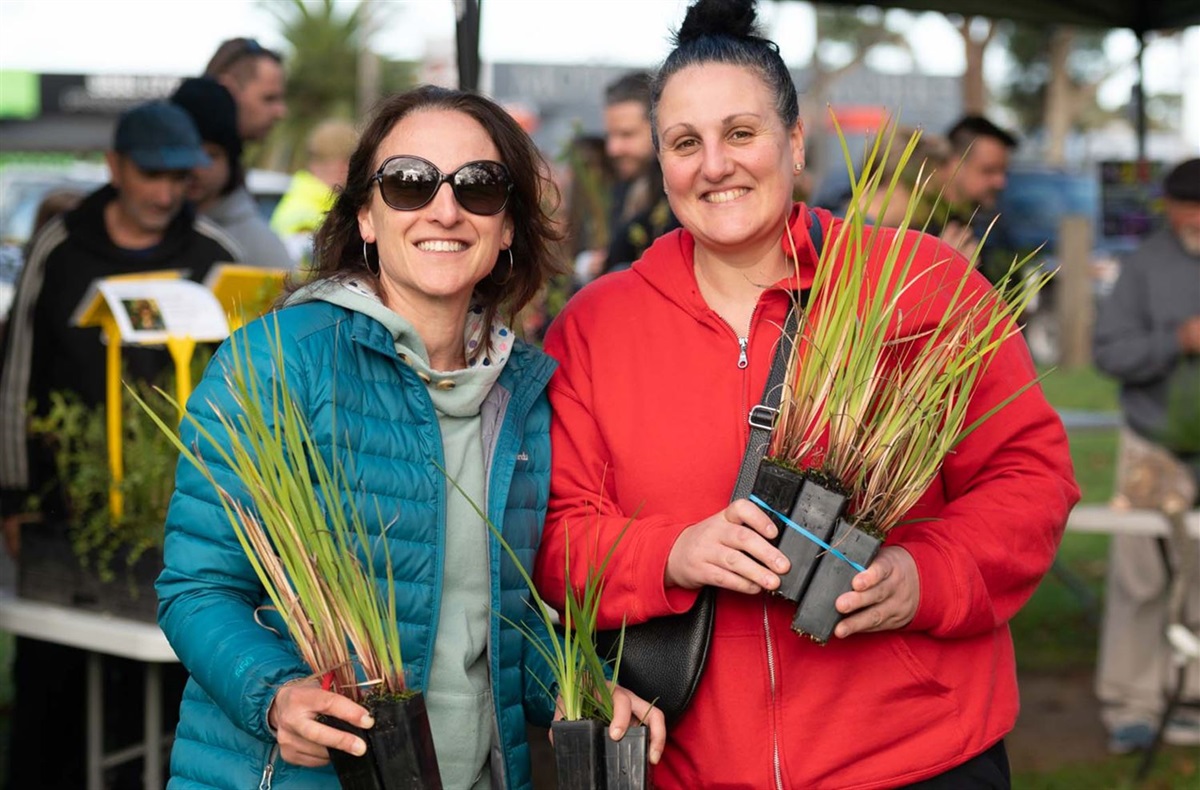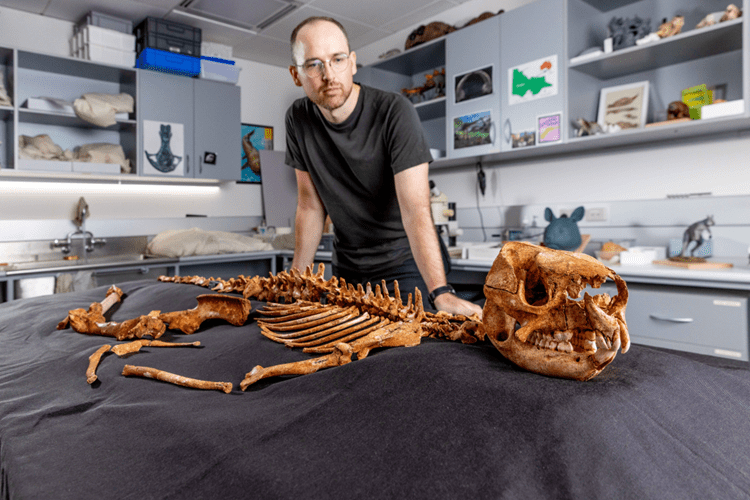Why should space agencies consult urban planners before building the first city on Mars? If you’ve ever been stuck in gridlock while navigating the confusing streets of Boston, you might understand.

Expand
“I was frustrated with all the talk about going to Mars, and thinking to myself, ‘Wait a second, hold your horses. You don’t have a plan,'” says Professor Justin Hollander. His book The First City on Mars offers a blueprint for a settlement based on best practices in urban planning.
Photo: Alonso Nichols
“There’s this urban myth that the original streets of Boston were designed by cows,” since the routes are so meandering, says Tufts Urban and Environmental Planning Professor Justin Hollander. Even though the story’s not true, it reflects an insight that should guide plans for settling other planets: “Haphazardness doesn’t always have the best outcomes.”
In his new book The First City on Mars: An Urban Planner’s Guide to Settling the Red Planet, Hollander paints a picture of a city without congestion, where people walk, bike, and ride silent trains through subterranean tunnels that link domed structures. Parks with trees and grass abound, encased under glass that seals in Earth-like air pressure while yielding sweeping views of the “distant sun and shimmer of reddish-brown craters across the landscape.”
Why not imagine such a perfect city? In many ways, Mars is an urban planner’s dream: It’s a blank slate. And its first settlement may be under construction sooner than you think. NASA hopes to send humans there as early as the 2030s, while SpaceX founder Elon Musk insists that one million people will be living on Mars by 2050. The best and brightest scientific minds are making real progress in figuring out ways for humans to travel-and survive-140 million miles from Earth.
While advances in space travel and astrophysics make captivating headlines, there are also more mundane matters of everyday life on Mars to address. How will people live in small, enclosed spaces? How will they access sunlight and greenery, or travel from place to place underground? Those questions fascinate Hollander, who has spent decades researching how cities and regions promote well-being and how they manage, design, and plan for change. He explores them as director of Tufts’ Urban Mars Project, a research initiative focused on urban planning in space.

This rendering shows a nighttime view of a park within a node in the Mars city Aleph, described in Hollander’s book.
Image: Berk Diker
“I wouldn’t call myself a science fiction buff or anything-I’m more of a planning buff,” he says. “I was frustrated with all the talk about going to Mars, and thinking to myself, ‘Wait a second, hold your horses. You don’t have a plan.'”
The First City on Mars borrows from the best practices Hollander has identified in his career studying different dimensions of urban planning, from cognitive architecture to the regeneration of abandoned land and shrinking cities. The design and layout of a city, he argues, shapes its residents’ emotional and psychological states. The book outlines lessons gleaned from Earth-such as the unconscious appeal of certain shapes and patterns in construction, or the innate need for connections with nature-to inform a set of principles that can guide planners in space.
While some design principles may be universal, inhospitable environments also present unique challenges. And Mars will be humanity’s most challenging destination yet. The Red Planet’s temperature averages around -81°F. Its toxic atmosphere is about 95 percent carbon dioxide. Thanks to bombardment with solar particles and cosmic rays, its surface is 40 to 50 times more radioactive than Earth’s. Its soil is full of chemical compounds that are toxic to cells. And its lack of gravity would likely wreak havoc on human bodies over time.

The greenery inside a domed structure contrasts with the red outside in this view from a rendering of the proposed Mars city called Aleph.
Image: Berk Diker
But Hollander finds inspiration from humans who have settled in inhospitable corners of the Earth. To learn how to live underground, we might look to the seventh-century cave dwellings of Cappadocia, Turkey, which housed a population of 50,000 in a sprawling indoor network that spanned 11 stories. To survive in extreme cold, planners can learn from communities in the Arctic and Mongolia that have built igloos and yurts for thousands of years to withstand wind, maximize solar exposure, and minimize heat loss.
Of course, space settlers will also need to adopt never-before-used technologies in order to build structures, access water, and grow food. Hollander describes how they’ll need to turn Martian soil-called regolith-into bricks, ceramics, glass, and concrete by fusing mineral particles together using heat. They will have to extract water from deposits of ice and minerals underground and then recycle it using an innovative closed-loop system. And to make food, they will learn to breed crop strains to withstand radiation; cultivate single-celled proteins like microbes, algae, and yeast; and grow cellular meat in labs (a technology being developed at Tufts).
Combining the universal design principles he’s outlined with the most recent advances in science, Hollander devotes the final section of his book to a blueprint for an actual city. Called Aleph, it consists of three linked dome-covered structures that descend several stories underground. Connected by tunnels below ground and rover paths above, these “nodes” form a basic blueprint that can be replicated to create a growing network of settlements. Graphic renderings of Aleph-as well as a fictional account of a day in the life of a space traveler named Jae-bring the plans to life.

Parks and green spaces figure prominently in Hollander’s plan for a city on Mars.
Image: Berk Diker
The book fills a gap in the burgeoning field of “space architecture,” which focuses on building structures in space, but hasn’t quite scaled up to planning full settlements. Hollander is among a small group of scholars combining space architecture and engineering with urban planning-an area of research that will inevitably continue to grow, given Earthlings’ ceaseless drive to explore and settle in increasingly far reaches of the universe. He sees that drive in the Tufts students taking his graduate course on the history of human settlements, as well as the undergraduates in his Urban Studies course. “Those students always inspire me with their boundless creativity, and their curiosity about this world and worlds beyond,” Hollander says.
That’s why-despite compelling critiques about the need to solve problems on Earth before spending money traveling to Mars-Hollander sees a future Martian settlement as inevitable. “Is a city on Mars a crazy idea? Yes. Are people going to do it? Yes,” he says. “I’m drawn to the boldness of the whole thing-it’s about doing something that’s almost beyond our ability to comprehend.”
The professor is excited to play his own role in that history-making journey-but when the first Mars-bound spaceship departs with humans on board, he’s content to wave goodbye from the comfort of Earth. “We’ve got a great home here,” he says. “The more I study Mars, the more I appreciate all this fresh air and sunshine-at least, not poisonous sunshine.”
“I don’t have to be part of that trip,” he adds. “I just want them to be prepared.”








